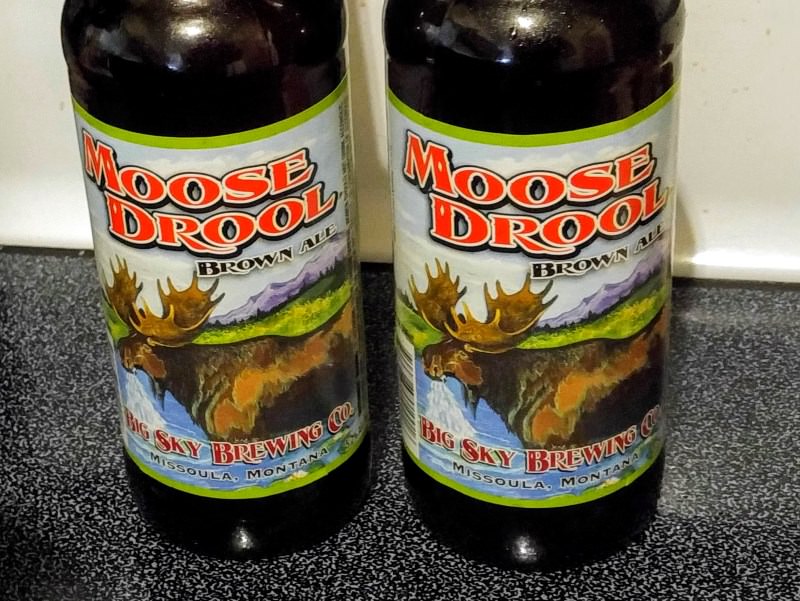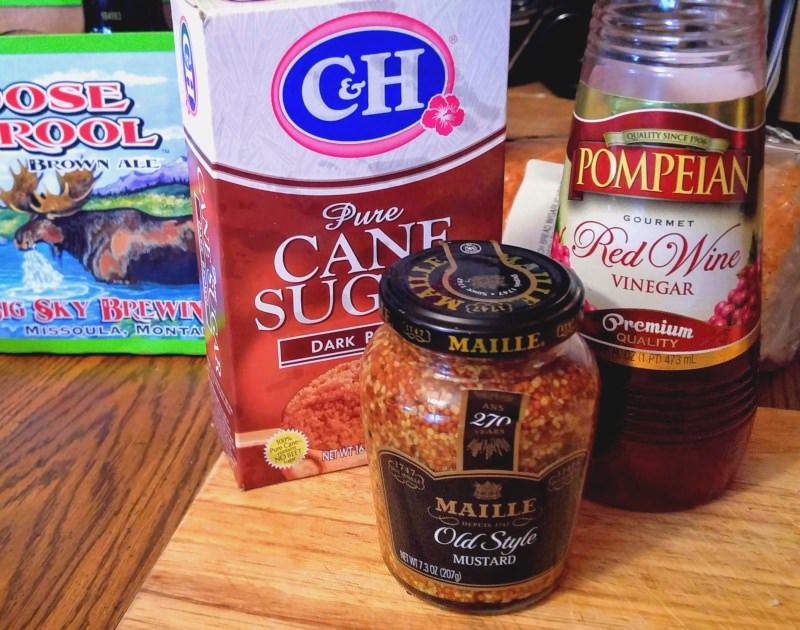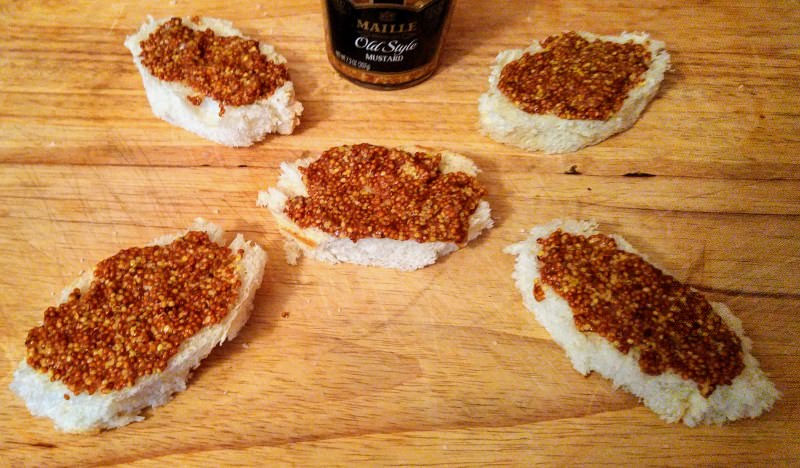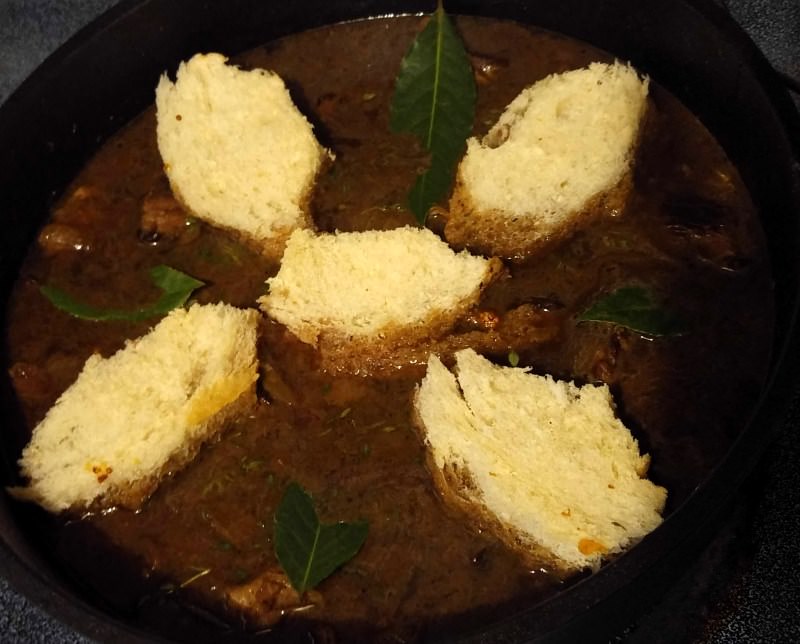TasunkaWitko
Well-Known Member
I have been making this Belgian beef stew for years; I started with a recipe that was good, but since then have learned to make it really well, and it has been a family favourite for a long time. This past weekend, I prepared another Carbonnade à la Flamande. This one was easily the best I've yet made, so I will share the story with you.
This is most likely the "final" recipe that I will ever use; from this point on, I would say that it is all about perfecting the method and technique. It is the result of much research; carefully poring over many posts, websites, email exchanges and social media messages. Most of all, it is thanks to the patient assistance of a good friend in Flanders, and I owe him a debt of gratitude that I cannot repay.
This recipe will easily feed 6 to 8 people; cut it in half for smaller households.
I made the Carbonnade exactly as described above, except for the time and temperature in the oven, which I will explain below. Where a range of the amount of ingredients is listed (such as the beef, onions, flour etc.), I went with the higher amount. The resulting Carbonnade was very good, and seemed to be almost perfect; in fact, and was certainly my best preparation so far, but there was still a little room for improvement. Here are some notes based on the day.
Here are my beef, onions and garlic, all prepared and ready to go:
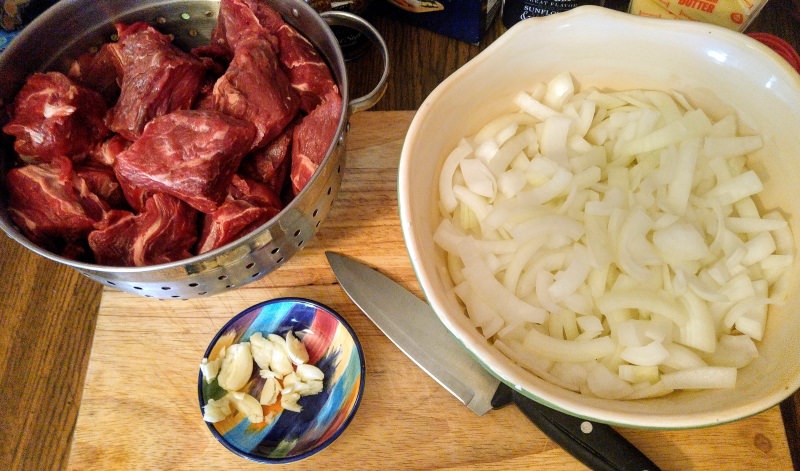
The lighting in my house seems to be a bit off; the fat of the beef and the onions should be white, rather than yellowish.
For the beef, I used a very good chuck roast from the very small herd of Angus/Hereford cross cattle that my parents own, cutting it into largish chunks. Chuck roast, as well as other "tough" (and once-upon-a-time cheap) cuts of beef are perfect for this meal, due to the tenderness and flavour achieved through the long, slow cooking process.
To begin, I melted 3 tablespoons of butter in my cast iron Dutch oven, then tossed the onions in to begin their long, slow cook. Throughout the process, I stirred them often as they released their liquid and cooked down, taking care not to let them scorch or burn. It wasn't long before the onions were really smelling good, filling the house with an incredible aroma that promised many good things.
Once the onions had cooked down and were starting to get some colour, I added my crushed garlic. I used three good-sized cloves, which turned out to be just right; any more would simply have been too much. Before long, the mild heat from the pot opened up the aroma of the garlic, which blended nicely with the onions; things were starting to get really good, here!
Moving along, I reduced the heat to the lowest setting, and heated some oil in my frying pan. Once it was quite hot, I began searing the chunks of beef:
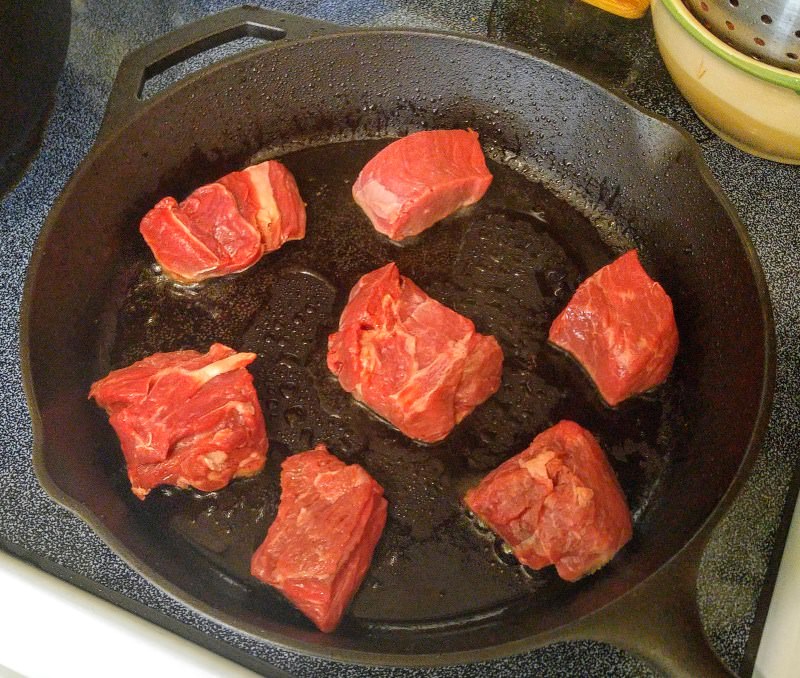
You really do want to take your time with this step; sear the beef in small batches, and do not move the chunks while they are in the pan, except to turn and sear another side. Your patience will be rewarded, if you exercise self-discipline:
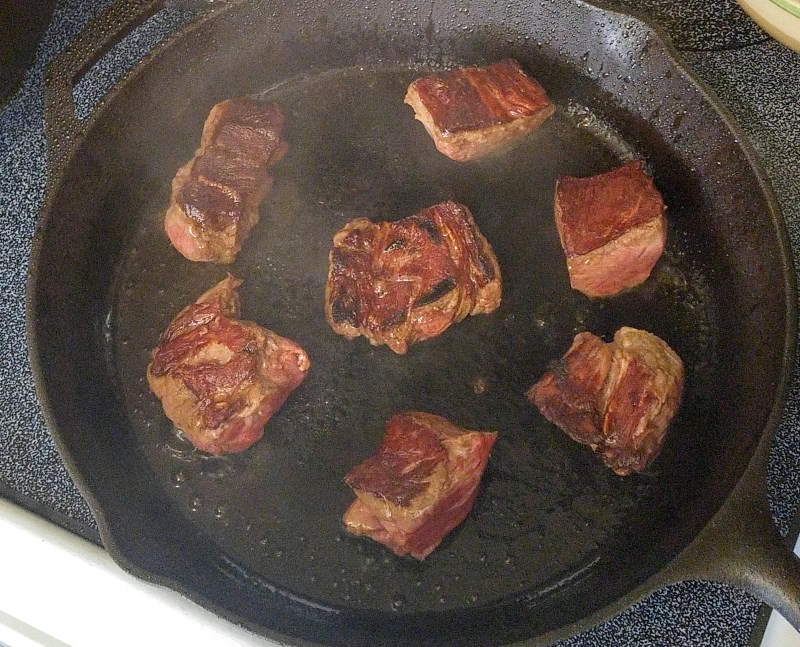
It seemed to me that searing for 5 minutes on the first side, then about 4 minutes on the remaining sides, produced good results.
By the time the first batch of beef was seared on all sides, here is what the onions looked like:
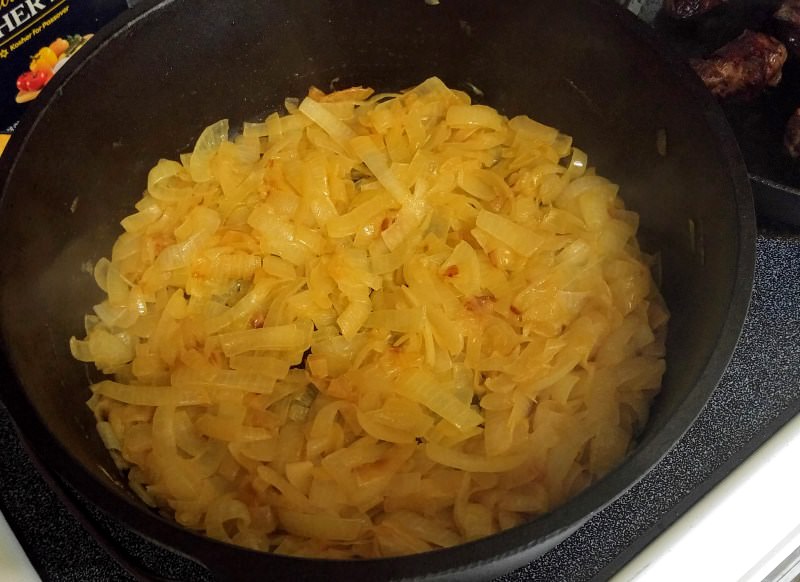
Once again: weird lighting! The onions weren't quite this "yellow," but they did have some very good colour on them. I added the beef to them, along with a little salt and freshly-ground black pepper, then continued with the next batch of beef chunks.
As you continue to sear the batches of beef, you may need to reduce the heat and adjust the times a little bit, in order to prevent scorching as your pan finds its groove. As I seared the beef and added it to the Dutch oven, I continued to grind some pepper over each batch, but only added a little salt every other batch, as the stew will reduce and become concentrated wile it cooks.
This process will take as long as it takes, and should not be rushed; after four full batches of beef, plus half of a fifth, I finished searing the beef, and it looked great! I stirred the beef an onions together:
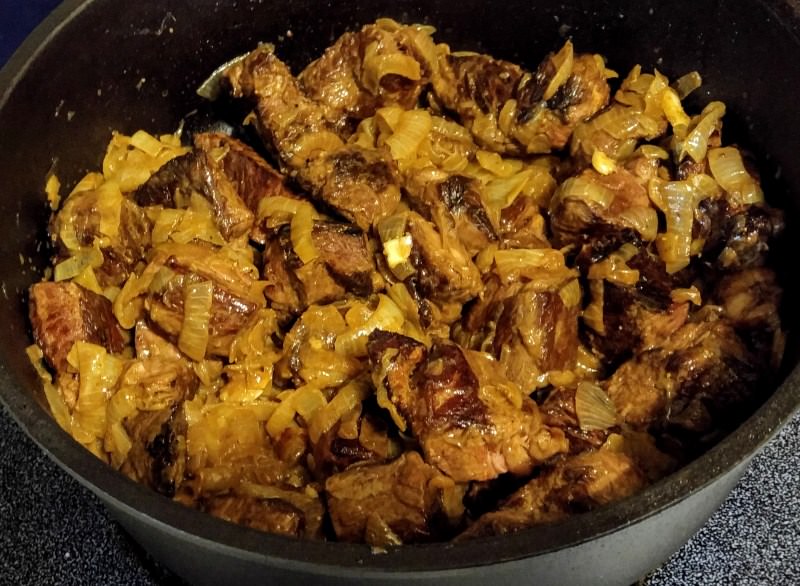
(Continued Below)
This is most likely the "final" recipe that I will ever use; from this point on, I would say that it is all about perfecting the method and technique. It is the result of much research; carefully poring over many posts, websites, email exchanges and social media messages. Most of all, it is thanks to the patient assistance of a good friend in Flanders, and I owe him a debt of gratitude that I cannot repay.
This recipe will easily feed 6 to 8 people; cut it in half for smaller households.
Carbonnade à la Flamande
Ingredients
4 to 4.5-pound beef chuck roast
4 or 5 medium to large onions
Butter, for frying the onions
Sunflower or other neutral oil for frying the meat
3 cloves of garlic, crushed
Salt
Freshly-ground black pepper
2 or 3 tablespoons flour
2 bottles dark abbey ale (Westmalle, St. Bernardus 12, Kapittel Prior etc.)
2 beer bottles of water, veal stock or beef stock
*2 carrots, (optional, if desired), scraped and coarsely chopped
*2 tablespoons concentrated beef base (optional, if desired) such as Better Than Bouillon (or equivalent in cubes)
2 or 3 sprigs of thyme, or half as much dried thyme
3 or 4 Bay leaves
2 tablespoons red or white wine vinegar, as you prefer
2 tablespoons dark brown sugar
2 or 3 slices of good bread, crusts removed
Dijon mustard
Mise en Place
1. Trim fat to 1/4 inch and cut roast into chunks, approximately 2 inches x 3 inches.
2. Peel onions and cut in half lengthwise; bisect the halves and slice “across the grain,” approximately 3/8-inch thick.
3. Peel and crush the garlic; mince it, if you wish.
4. Prepare beef stock, if necessary.
5. Remove the crusts from the slices of bread and allow them to go a bit stale.
6. Assemble the remaining ingredients, measuring them out as necessary.
Preparation
Use a frying pan and a large cooking or stew pot; cast iron is recommended, but not absolutely necessary.
Put the cooking pot over low to medium-low heat, melt 2 or 3 tablespoons of butter and sweat the onions as long as you can, allowing them to cook their moisture out and get a little bit of colour. Do not let them scorch, or your Carbonnade will be bitter. When the onions cooked down almost as much as they can be, reduce the heat a little and continue to stir them now and then as you progress with the preparation.
Heat a thin layer of oil as hot as you dare, depending on your frying pan. Sear the chunks of meat in batches, taking care not to cover-crowd the pan; half-full is much better, otherwise, you will be boiling the meat in their own juices instead of searing it. You need to take your time for this; put the chunks in one by one and don't move them around all the time...don't shake the pan either, just leave them alone for a few minutes and then turn them. Sear all sides nicely.
Transfer the beef to the cooking pot on top of the onions; add some salt and pepper and the garlic. Sear the next batch of beef chunks until the all meat is done. You may have to add some oil to the frying pan as you progress, but do not remove the fond that is building up in the pan. Be careful with the amount of salt you add, as the Carbonnade will reduce during cooking.
Once all of the beef has been seared, sprinkle the flour over the meat that is now on top of the onions in the cooking pot. Put the fire a little higher, stir and let the flour cook just a little.
Put the frying pan back over the heat and pour a bottle of dark brown beer in it. Scrape the suc or fond from the bottom using a wooden spatula. Pour this mixture over the meat in the cooking pot. Add the second bottle of beer, then fill the bottle with water or stock and add to the pot; be sure to use the same amount of water or stock as you did beer. The meat should be only just covered with liquid.
Add one coarsely-cut carrot and concentrated beef base (if desired), your thyme, 3 or 4 bay leaves, 2 tablespoons of dark brown sugar and the same amount of red or white wine vinegar. Spread a generous layer of Dijon-style mustard on the crustless slices of bread and place them in the cooking pot, mustard-side-down. The mustard gives the sour component, providing balance; you can add a few drops of vinegar at the end of the cooking time to correct the acidity, if necessary.
Place the cooking pot in the oven at 325 degrees for 90 minutes; alternately, you can continue to simmer the Carbonande on the stove top, stirring as necessary and taking care that nothing sticks to or scorches on the bottom of the pot. Toward the end of the cooking time, put the lid of the pot askew to let liquid evaporate. At the end of the 90 minutes, check the beef; if the meat isn't not tender enough or the sauce not thick enough, give it another 30 minutes.
When the beef has become completely tender and the sauce thick and dark, remove the pot from the oven. Correct the seasoning and acidity, if necessary, then serve with boiled or fried potatoes and the beer you used to make the stew.
I made the Carbonnade exactly as described above, except for the time and temperature in the oven, which I will explain below. Where a range of the amount of ingredients is listed (such as the beef, onions, flour etc.), I went with the higher amount. The resulting Carbonnade was very good, and seemed to be almost perfect; in fact, and was certainly my best preparation so far, but there was still a little room for improvement. Here are some notes based on the day.
Here are my beef, onions and garlic, all prepared and ready to go:

The lighting in my house seems to be a bit off; the fat of the beef and the onions should be white, rather than yellowish.
For the beef, I used a very good chuck roast from the very small herd of Angus/Hereford cross cattle that my parents own, cutting it into largish chunks. Chuck roast, as well as other "tough" (and once-upon-a-time cheap) cuts of beef are perfect for this meal, due to the tenderness and flavour achieved through the long, slow cooking process.
To begin, I melted 3 tablespoons of butter in my cast iron Dutch oven, then tossed the onions in to begin their long, slow cook. Throughout the process, I stirred them often as they released their liquid and cooked down, taking care not to let them scorch or burn. It wasn't long before the onions were really smelling good, filling the house with an incredible aroma that promised many good things.
Once the onions had cooked down and were starting to get some colour, I added my crushed garlic. I used three good-sized cloves, which turned out to be just right; any more would simply have been too much. Before long, the mild heat from the pot opened up the aroma of the garlic, which blended nicely with the onions; things were starting to get really good, here!
Moving along, I reduced the heat to the lowest setting, and heated some oil in my frying pan. Once it was quite hot, I began searing the chunks of beef:

You really do want to take your time with this step; sear the beef in small batches, and do not move the chunks while they are in the pan, except to turn and sear another side. Your patience will be rewarded, if you exercise self-discipline:

It seemed to me that searing for 5 minutes on the first side, then about 4 minutes on the remaining sides, produced good results.
By the time the first batch of beef was seared on all sides, here is what the onions looked like:

Once again: weird lighting! The onions weren't quite this "yellow," but they did have some very good colour on them. I added the beef to them, along with a little salt and freshly-ground black pepper, then continued with the next batch of beef chunks.
As you continue to sear the batches of beef, you may need to reduce the heat and adjust the times a little bit, in order to prevent scorching as your pan finds its groove. As I seared the beef and added it to the Dutch oven, I continued to grind some pepper over each batch, but only added a little salt every other batch, as the stew will reduce and become concentrated wile it cooks.
This process will take as long as it takes, and should not be rushed; after four full batches of beef, plus half of a fifth, I finished searing the beef, and it looked great! I stirred the beef an onions together:

(Continued Below)


